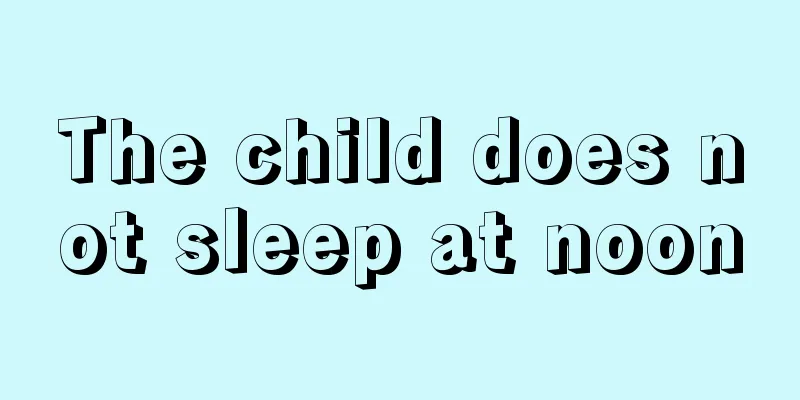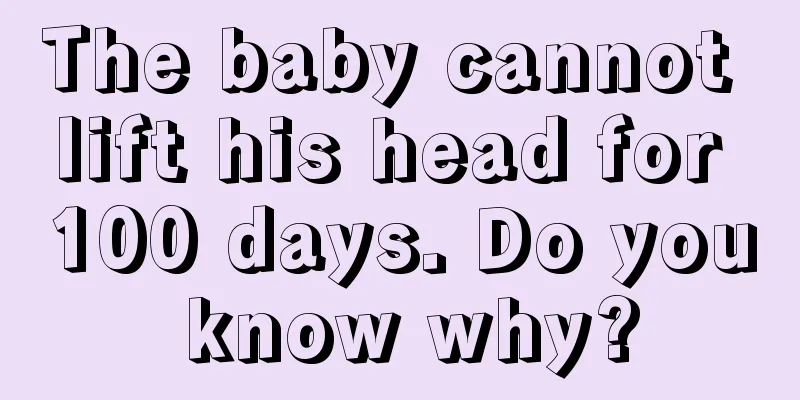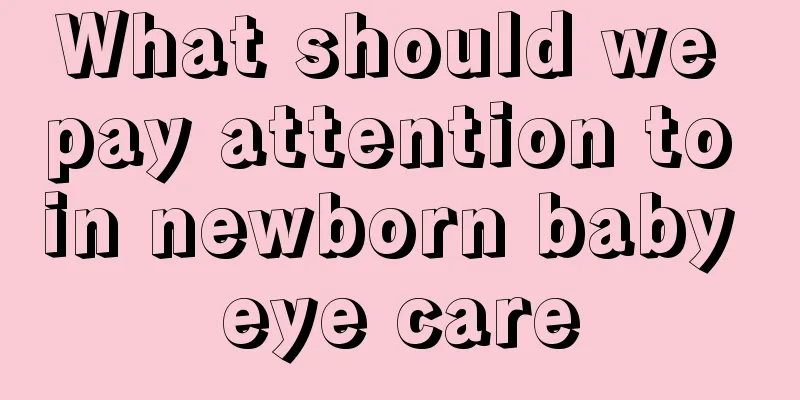Baby memory training

|
We all know that everyone's memory is different, and it usually starts to show up from a young age. Among children of the same age, some children can remember many things that happened, but some children have almost no impression of what happened. This makes most parents worried. So what should we do if our baby has a poor memory? Let's take a look at some methods of memory training for babies: Let's take a look at the memory development patterns of children at each stage: 6 months: Short-term memory of surrounding things 9 months: Can remember things that are not in front of you 12 months: Imitation based on memory 3 years old: Long-term memory Method/Step 2: Four characteristics of memory in children aged 1-3 1. Conscious memory is dominant Preschool children cannot control the content of their memory and often remember simple things naturally, such as fairy tales, stories, poems, etc. The things that are remembered are often intuitive, concrete and vivid, which can stimulate his interest in memory. 2. Image memory is dominant Due to the limitations of their thinking ability, young children rarely gain a deep understanding of the essence of things when observing them. He only remembers things that are vivid and lifelike. 3. Mechanical memory is the main Preschool children lack life experience and cannot strengthen their memory based on understanding like adults do. They can only memorize things based on their external characteristics. 4. Easy to remember, but also easy to forget The memory of preschool children is greatly affected by the environment and emotions, and their brains are easily excited and their emotions are very unstable. At the same time, young children’s self-control ability is relatively poor, so their memory activities are easily disturbed by external things. Method/Step 3: Small games are suitable for children aged 1-3, and can also train children's super memory 1. Jigsaw puzzle Make a clock face puzzle with your child. The method is to cut the clock face into pieces and ask the baby to put it back together. When installing the hour and minute hands, you can indicate that he is placed at a certain time. Can improve: observation, memory, cognitive development, logical ability, concept of time and clock 2. Clapping You can play this game with your child from the age of 4. Dad or mom first lets the child close his eyes, claps his hands a few times, and then asks the baby how many times he clapped just now. After he answers correctly, repeat the process. When the baby is a little older, you can increase the difficulty, such as patting a few times, pause, pat again, pause, and pat again. Then ask the baby: How many claps did you do in the three times just now? You can also ask the baby to follow suit. Can improve: memory, imitation ability 3. Remember the road shape This method is suitable for children aged five to six. When you go to the park, introduce your children to the surrounding landmarks, such as places selling cold drinks, ticket offices, public transportation stations, newsstands, etc. Go home and make a simple map, marking the landmarks. Next time you go to the park, pull out a map and ask your baby to point out the main landmarks. Can improve: observation, development awareness, memory ability 4. Draw the grid When the child is 5 years old, parents can prepare a large graph paper and some common animal cards or number cards. The mother puts four kinds of animal cards or number cards in each grid, asks the child to observe carefully for a while, then takes away the cards and asks the child to use his brain to help these animals or numbers return to their home. If the child finds it, the mother puts 6 more animal or number cards on another grid and repeats the steps. Can improve: observation, cognitive ability, association ability, memory ability Method/Step 4: Methods for developing memory in children aged 10 and above 1: Homophonic memory method: Suppose we now want to remember a string of numbers: for example, the new height of Mount Everest is 8,844 meters (the elevation data published in 1975 was 8,848 meters). We can memorize it based on homophones. First, divide it into segments, 88, 44, which are homophones of "climb" and "try". Put them together and say "How high is Mount Everest? Climb and try". This way you can remember its height. If you don’t believe it, just say to yourself: How high is Mount Everest? Try climbing it, the first reaction in your mind must be 8844! 2: How to memorize large amounts of information quickly: For example: playing cards How can you memorize a deck of playing cards completely within a limited time? Just hearing the title makes many people feel that it is a very difficult and impossible task! Then let's analyze for you how to master the skills. "Most people tend to memorize from the first card. Even if they memorize the 10th or 20th card, they still have to memorize it again because they are afraid of forgetting it. With such repetition, the time spent by the brain and the amount of memory increase exponentially. For example, when memorizing the 4th card, the amount of memory is 4+3+2+1=10 times." 3: Association training method For example, if you use the homophones to find the image of a character, you will think of Fang Shiyu played by Jet Li. If you use the homophones to find the image of a character, you will think of Fang Shiyu played by Jet Li. If you use the homophones to find the image of a character, you will think of Fang Shiyu played by Jet Li. If you use the homophones to find the image of a character, you will think of Fang Shiyu played by Jet Li. If you use the homophones to find the image of Fang Shiyu ... We will find an interesting rule: "The more absurd, exaggerated and interesting the picture you imagine, the deeper the memory will be." The most direct and effective method is to concretize simple and abstract information through association. When the things you need to remember are transformed into objects you are familiar with, memory becomes very easy. Precautions You may find it complicated at this point, but it is actually very simple as long as you practice it simply and become proficient in it. The memorized deck of cards can be remembered for a week, but if you want to remember it for a long time, you need to review it constantly and refresh your memory. |
<<: What causes children to become fat?
>>: What to do if your baby has poor memory
Recommend
Baby can't sleep well after breastfeeding
Newborn babies need to be fed with breast milk, b...
What is the best way to treat children’s cough and asthma?
In the city, you can see massage parlors everywhe...
Causes of overbite in children's teeth
There are many common diseases among children. Wh...
What medicine is better for children with ascariasis?
Children's bodies are always weak, and their ...
What to do if your two-year-old has a bad temper
Every baby is a little angel in the family, espec...
What to do if your baby has milk curds during pregnancy
The most common problem for babies who are still ...
What should I pay attention to when my 2-year-old child has allergic rhinitis?
If a child around two years old has allergic rhin...
How to change the habit of children sucking their fingers
When a child is very young, sucking his fingers i...
How to educate children from childhood
Parents who have raised children should know that...
What to do if your baby has a cold and is breathing rapidly
Babies are smaller, have lower immunity, and are ...
What are the dangers of overweight baby?
The fetus absorbs various nutrients from the moth...
What to do if your three-month-old baby suddenly cries
The growth of the baby is a topic that every pare...
What is the reason for children's frequent twitching during sleep?
If some children have frequent convulsions when t...
What to do if a one-year-old child has diarrhea
Many newborn babies suffer from indigestion and d...
Two-month-old baby's intellectual development
Since the baby is born, almost every day is diffe...









